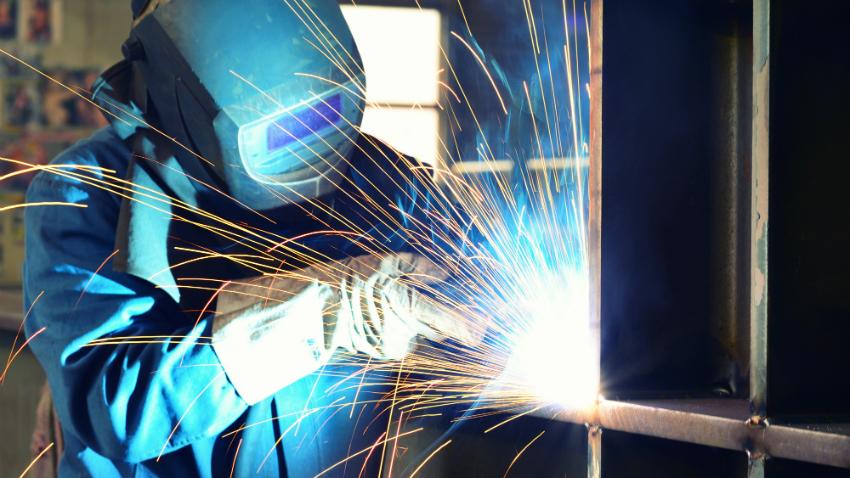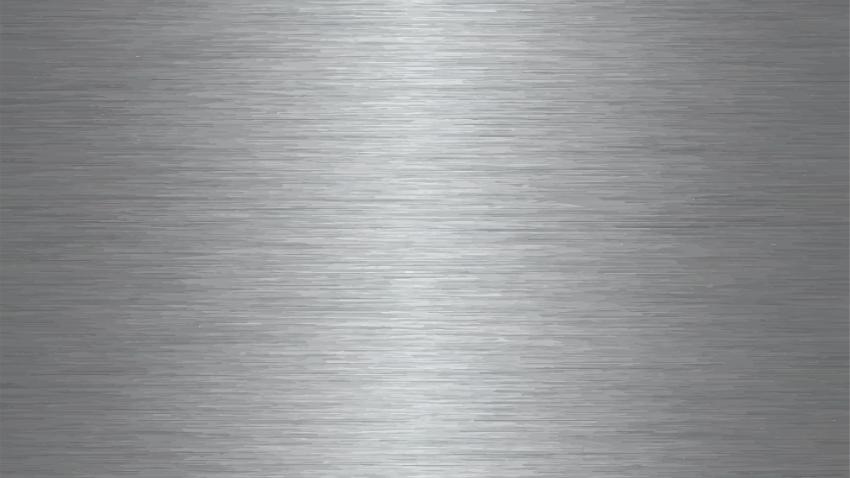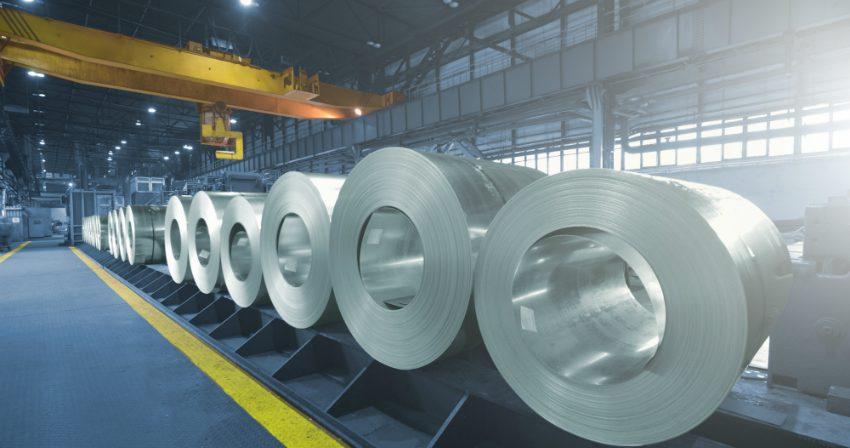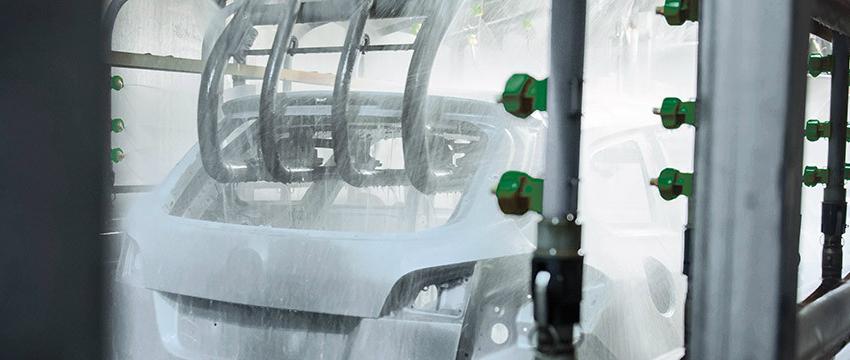« How to Prevent Metal Discoloration »
Some minerals in nature stand out due to their beautiful, iridescent surface. This effect can also be observed on metal surfaces – which in industrial metal processing is sometimes desired, but in other cases unwanted. But how do these colorful hues form, and how can the phenomenon of metal discoloration, commonly known as tarnishing, be prevented?
What Are Temper Colors?
In nature, you can admire colorful, shimmering minerals such as peacock ore or chalcopyrite. Depending on the light, these stones shine in a rainbow of colors, reminiscent of the iridescent film that can also form on an oil puddle or soap bubbles. This coloration is caused by very thin, transparent oxide layers that can form on the surface of minerals and metals. These so-called interference colors occur through the overlapping of light rays that are refracted or reflected on the thin layers. Depending on the thickness of the layer, the light is refracted differently and perceived by the human eye as different colors.

How Do Temper Colors Form?
In nature, temper colors form on minerals whose surfaces are easily oxidized by oxygen in the air. These include copper or iron-containing minerals, such as chalcopyrite or hematite. In metal processing, temper colors are sometimes intentionally produced when a metal is meant to achieve a specific color. Some metal surfaces are refined this way to acquire a certain color. For example, titanium can take on a desired color tone through anodizing, which involves the targeted creation of an oxide layer. This color can range from gold to blue, purple, and green, which is utilized in the watch and jewelry industries. In steel processing, a process called tempering is used to alter the properties of the steel, such as hardness and toughness, and to relieve internal stresses. However, in other metalworking processes, such as welding, the formation of an oxide layer is undesirable, and efforts are made to prevent its formation.
Temperature and Duration Affect the Temper Color
In titanium, stainless steel, and other metals, the thickness of the oxide layer determines the surface color. When heated, oxygen diffuses into the upper metal layers, and the color depends on how deep it penetrates the surface layer. Temperature and duration will determine the depth of penetration. Conversely, the color of the metal can indicate the thickness of the oxide layer. For example, a pale-yellow hue on stainless steel indicates a thin oxide layer, that was processed At approximately 200 C Generally, the color spectrum ranges from light yellow to red to blue and finally to black, with the black layers being referred to as scale. Multiple colors can also occur side by side, as can be seen on weld seams.

Which Materials Are Particularly Affected?
In principle, an oxide layer can form on all metals, either through heating or exposure to air. The tarnishing of silver or other metals is a well-known phenomenon in everyday life. In the case of silver, however, the black layer does not result from air oxygen but from hydrogen sulfide, which reacts with silver to form silver sulfide. Upon closer inspection, even this coating shows a slight iridescence. . In some cases, such as with titanium, the coloration caused by oxidation is desired, while in other cases, it is not. Temper colors on stainless steel, especially when they occur on weld seams, are generally undesirable as they negatively affect the corrosion resistance, one of the most important properties of stainless steel.
Why Is Corrosion Resistance Important and Why Should Temper Colors Be Avoided on Stainless Steel?
Corrosion-resistant steels typically contain a minimum of 11% chromium, which reacts with the oxygen in the air to form a thin, adherent chromium oxide layer. This process, known as passivation, prevents further oxidation of the underlying steel. Additionally, the passive layer regenerates when damaged, if enough oxygen is available and no other surface deposits prevent the formation of the layer.

Temper colors on stainless steel can disrupt this delicate balance. Chromium reacts more readily with the oxygen that diffuses into the deeper layers, depleting the surface of chromium and preventing the formation of the protective chromium oxide layer. This can lead to pitting corrosion, which can spread into the material, forming cavernous holes, leaving the material irreparably damaged. If temper colors have formed on stainless steel, they must be removed, with only light discoloration being tolerable.
How to Remove Temper Colors from Stainless Steel
The Easiest Method – Mechanical Removal
Mechanical removal of temper colors from stainless steel can be done by brushing, grinding, or blasting. As with all treatment methods, thorough cleaning, and complete degreasing beforehand are essential. If only a thin layer needs to be removed from the metal, brushing is generally sufficient. It is important to note that not all areas of the workpiece may be accessible, depending on the geometry. Alternatively, temper colors can be removed from the metal by grinding. Care should be taken not to cause local overheating during processing, which could lead to the formation of new oxide layers that would hinder the formation of the passive layer. Grinding should also be done in several steps and with different grit sizes – moving from coarse to fine. In industrial applications, blasting is often the preferred method among mechanical treatments. It removes even stubborn temper colors and simultaneously creates a more favorable, uniform surface finish.
Chemical Removal
Pickling is a chemical method used to remove temper colors. For stainless steels, a mixture of nitric acid and hydrofluoric acid is typically used. In addition to immersion pickling, where the workpiece is dipped into a bath (suitable for small to medium-sized parts), pickling pastes or gels can be applied locally to remove temper colors. For exceptionally large or complex components, spray pickling is used.
Often, both processes are used sequentially, with a mechanical treatment followed by pickling.
Electrochemical Treatment – A Third Option
A third method is electrochemical treatment: “electropolishing” or “anodic pickling.” The principle is the reverse of galvanizing: the workpiece is immersed in an electropolishing bath, connected as an anode in a direct current circuit, and the metal is electrochemically dissolved from the surface. This process has the advantage of creating a remarkably clean and stress-free surface.
Prevention Is the Best Strategy
The best way to remove temper colors is to prevent them from forming in the first place. Welding under a protective gas atmosphere, known as back purging, can effectively prevent the formation of temper colors. Inert gases such as argon or nitrogen, or mixtures of argon-hydrogen or nitrogen-hydrogen, are used. The reducing effect of hydrogen is employed in these mixtures, as it can reduce already-formed metal oxides at elevated temperatures and react with any residual oxygen to form water. The selection of the appropriate gas mixture depends primarily on the material being processed.
 Kluthe Magazine
Kluthe Magazine

